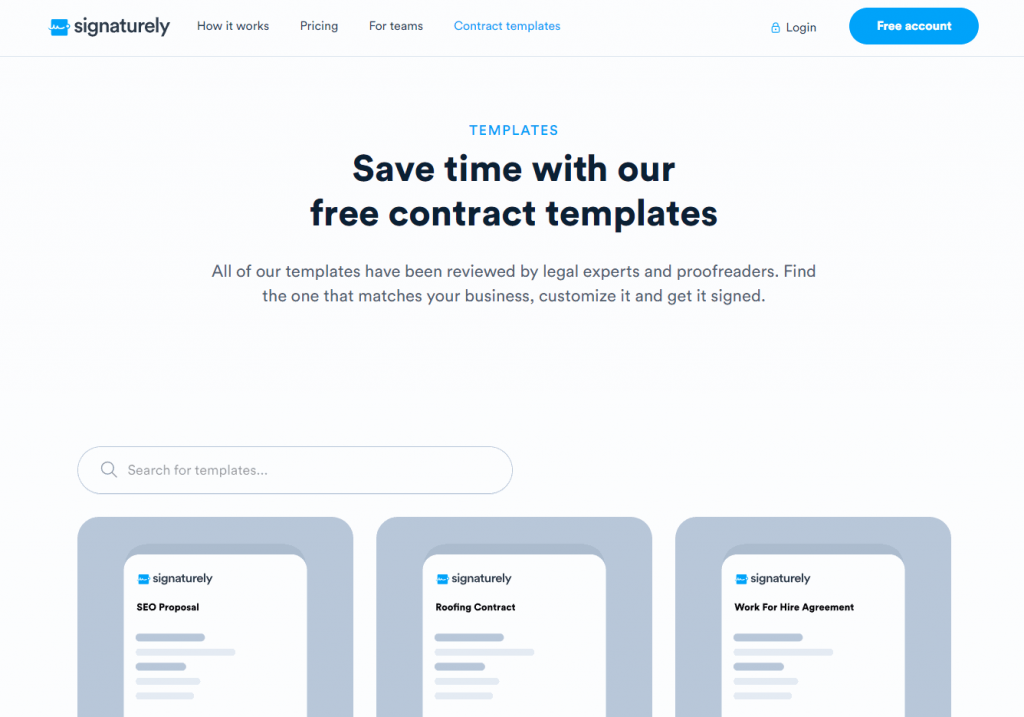The contract management process involves managing and executing contracts with customers, clients, and other businesses you interact with. It is a process that must not be taken lightly. Contracts are the lifeblood of any successful business and are key to maximizing operational and financial performance and minimizing potential risks.
This blog post will walk you through everything there is to know about mastering the contract management process.
What Is The Contract Management Process?
The contract management process creates, executes, and analyzes contracts to maximize operational performance and reduce liability.
Businesses handle contracts when forming strategic relationships with clients, employees, contractors, suppliers, and industry partners. The contract management process ensures that all of these contracts are executed properly.
The purpose of all contracts, no matter their specifics, is to get work done and keep the business going. Successful contract management ensures that all transactions will remain beneficial to the business, with all interested parties delivering what is expected on time and as agreed.
Stages of the Contract Management Process
1. Planning
Planning is the first stage in the contract management process. It is all about getting organized for contract preparation and creating a contract management strategy that can ideally be applied company-wide.
You must answer the following questions during this initial planning stage:
- What are the types of contracts that you need to manage?
- What is the volume of the contracts?
- Can you streamline operations by using standard agreements or contract management software?
- Who is responsible for managing each stage of the process?
- What do they need to perform their job?
- What common issues do you need to prepare for?
- What resources are needed to implement the strategy?
The length of the planning stage depends on the size of your business, your industry, the complexity of the contracts you need, your set business rules, and the risk management elements you face.
Creating A Contract Management Process Flowchart
Part of the planning stage involves creating a flowchart for a bird’s eye view of the process. Assign a specific person or department to each stage so you can easily identify and correct bottlenecks.
2. Implementation
How can you implement your plan?
- Find people who will make your plan work.
- Provide resources for each step of the process.
- Identify who is responsible for each step and how much time they need to complete it.
- Establish a schedule to keep you on track.
- Closely monitor each stage of the contract management process and ensure that deadlines are met.
Look into contract management software that can streamline your approval workflow and manage each process step.
Onboarding is an important part of the implementation stage. It will ensure everyone involved has the necessary information and training to perform their job. Your contract manager should make sure each team member understands what they are responsible for.
3. Pre-Contract Stage
Next, you must get all of your contracts and agreements in order. Look into standard agreements and contract templates you can use to mitigate risk throughout the entire lifecycle. Hand-drafting contracts are time-consuming, and you may be better off using contract management software for a seamless contract creation process.
The biggest challenge of this stage is creating the right contracts that will meet your needs and reduce legal and financial risks. Consult with your legal department to create pre-approved templates that contain all required terms and clauses. Stakeholders may also accomplish contract approval.
4. Handover
In many companies, the individuals authoring contracts are often not the same people who execute them. The handover process is crucial, as the assigned negotiator must understand all the important elements of the contract they will present to the other party.
A thorough walkthrough of the critical contract information will ensure that contract negotiation and contract administration go smoothly.
5. Contract Stage
This is where the goals of your contracts are realized. You can expect your employees, clients, suppliers, and partners to operate under your established professional agreement.
The contract stage depends entirely on smooth planning and a thorough pre-contract stage, so do not take the previous steps for granted to get a contract on the table.
6. Pre-Renewal
The entire contract lifecycle doesn’t end after signatures and notarizations. You must ensure that your contracts are executed properly throughout the agreed-upon period, and terms must be re-evaluated before the contract renewal stage.
Evaluating contract performance involves looking through the agreement with fresh eyes to determine if adjustments need to be made and identify renewal opportunities. This will help you decide whether to renew the terms or create a new contract.
7. Post-Contract
You must ensure that all contract terms are met by the parties involved and that there are no loose ends after the contract cycle time. This can mean collecting final payments, double-checking deliverables, and overall auditing performance.
What Are The Objectives Of Contract Management?
Good contract management is all about keeping your business running smoothly. Having robust contracts will prevent compliance issues with all the parties connected to your operations.
Contract management ensures that all of your contractual obligations are met and that you can maintain good business relationships with all the entities with whom you have created legal agreements.
Successful contract management makes risk mitigation easy. For example, a warehouse business efficiently managing contracts can easily track down pending deliveries from its suppliers. With clear obligations, the warehouse ecosystem can function like clockwork and avoid missed deadlines and financial penalties.
Contract Management Process Best Practices
Contract lifecycle management best practices can help you create and execute all types of contracts.
Tips for Effective Contract Management Processes
Here are some of the best tips for effective contract lifecycle management:
1. Make It Your Top Priority
For contract management to be successful, it has to be a top priority. You must set aside enough time and resources to ensure that each step of the contracting process goes smoothly.
2. Get Everyone Involved
Contract managers are not the only ones responsible for the contract process. Everyone must be on board to make sure contract lifecycle management remains hassle-free.
All team members must clearly understand their role in the process and how to complete their assignments. A healthy contract management process also includes open lines of communication from top to bottom.
3. Use a Contract Management Tool
Contract management software like Signaturely can make implementation easy and minimize any errors on your part. With high-end software, you can easily see if all of your contract data is correct.
Robust software will make document management a breeze, so you don’t have to do anything manually. Just like CRM software such as monday.com can be used to centralize client communication, contract management tools help organize your important docs.
4. Store Documents in the Right Facility
A contract repository is an important element of contract management. Handling, storing, and retrieving reams of documents can be challenging—you can’t just put everything in one filing cabinet. You must know where and how to find all your contracts for easy access whenever you need to look up terms laid out in a specific agreement.
Aside from ease of access, you must prioritize security in your central repository.
5. Standardize Your Process
Prioritize the planning stage of the contract management process, as it will make everything easier for you in the future. Lockdown pre-approved templates for common agreements and develop a standard method for original contract creation that your organization can execute without a fuss.
Make Your Life Easier With Contract Management Software
With the help of contract management software, you can easily get your contracts and agreements in order. Here’s how:
Free Contract Templates
Contract management software like Signaturely offers you access to a library of free templates. This means you don’t have to go through the trouble of creating or designing contracts on your own. You can download any of our free contract templates and get started right away.

Introducing Signaturely – The Best Contract Management Software
With Signaturely, you can easily:
Generate Contracts
With the help of contract management software like Signaturely, you can customize as many contracts as you want and organize them into portfolios so they’re easy to find.
Keep Track of Files & Documents
You may need to refer to a certain file or related documents several times throughout a client or supplier relationship. Signaturely streamlines this process, so you don’t have to go through so many steps each time.
Sign Documents in Under 5 Minutes
The team at Signaturely created a simple and easy-to-use platform that ensures your electronic signatures are uploaded in under 5 minutes. You can set automated alerts to signers who don’t send the contract back within a certain period. You can easily track pending, signed, or unsigned documents in one centralized dashboard.
But that’s not even the best part. This contract management solution offers a free-for-life plan that you can use to attach electronic and digital signatures to your contracts.
Get started on managing contracts the right way. Create a free Signaturely account today!
Common Questions About The Contract Management Process
Take a look at some of the most commonly asked questions about contract management below:
One of the biggest issues contract managers face is staying in the loop. With so many moving pieces in the equation, you can easily lose track of what stage you’re in. This is where software like Signaturely comes in handy. You can easily streamline your operations and keep a close eye on each step of the contract process.
The old-fashioned contract drafting process is time-consuming and wastes too many resources. Software like Signaturely will help move things along faster and ensure your contract management system is as efficient as possible.
What You Need To Remember About Contract Lifecycle Management
You need to make sure your business runs as efficiently as possible. This is why all team members must be on the same page regarding contract management. With the help of high-end software like Signaturely, you can ensure your team is in the loop with minimal effort.
Make sure you’re following best practices and managing tasks efficiently with the help of a team-based document management solution like Signaturely.
